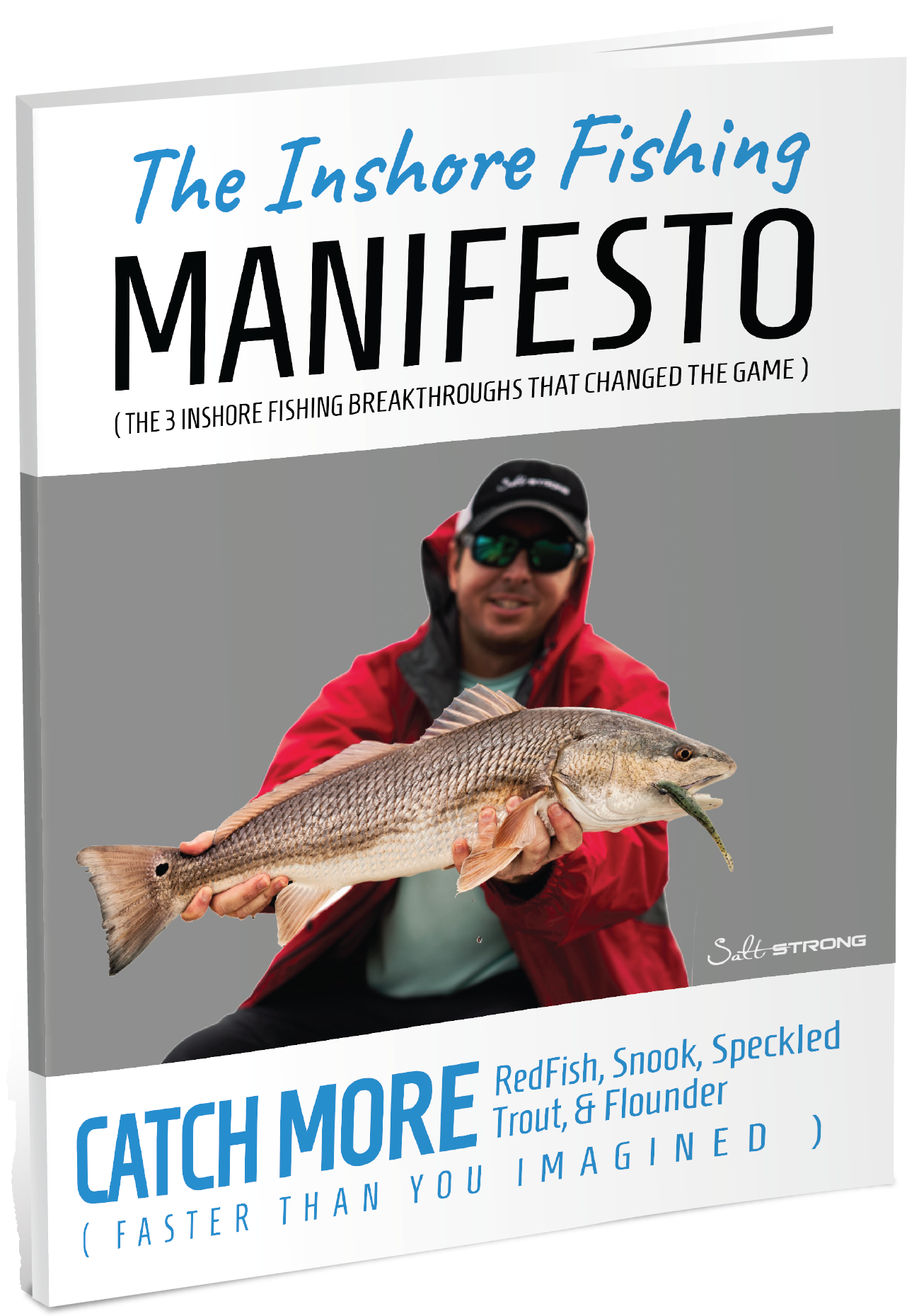Pacific Coast Yellowfin Tuna Tips
- By: Joseph Simonds
- on
- Found In: Fishing Tips, Offshore Fishing
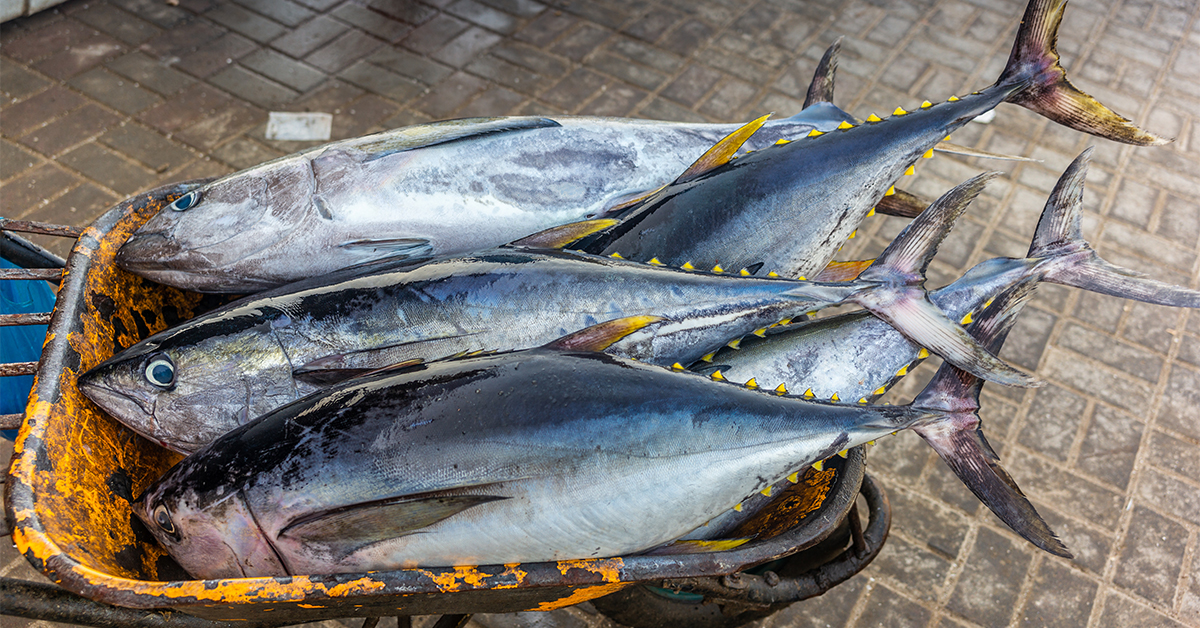
- Comments (0)
It’s tuna time!
I was talking with reader Zach Zorn the other day about catching yellowfin tuna in the Pacific.
He’s been having some amazing days out there (we’re talking 40 fish days with video to prove it), plus he’s contributed to almost $3.7 million in tournament winnings over the last three years, so we decided to bring him on and have him share how he’s doing it.
You’ll learn:
- The water conditions he’s targeting tuna in
- The best time of year for tuna in Southern California
- The exact tackle he uses
- The best bait and lures for tuna
Enjoy!
Yellowfin Tuna Madness
by Zach Zorn
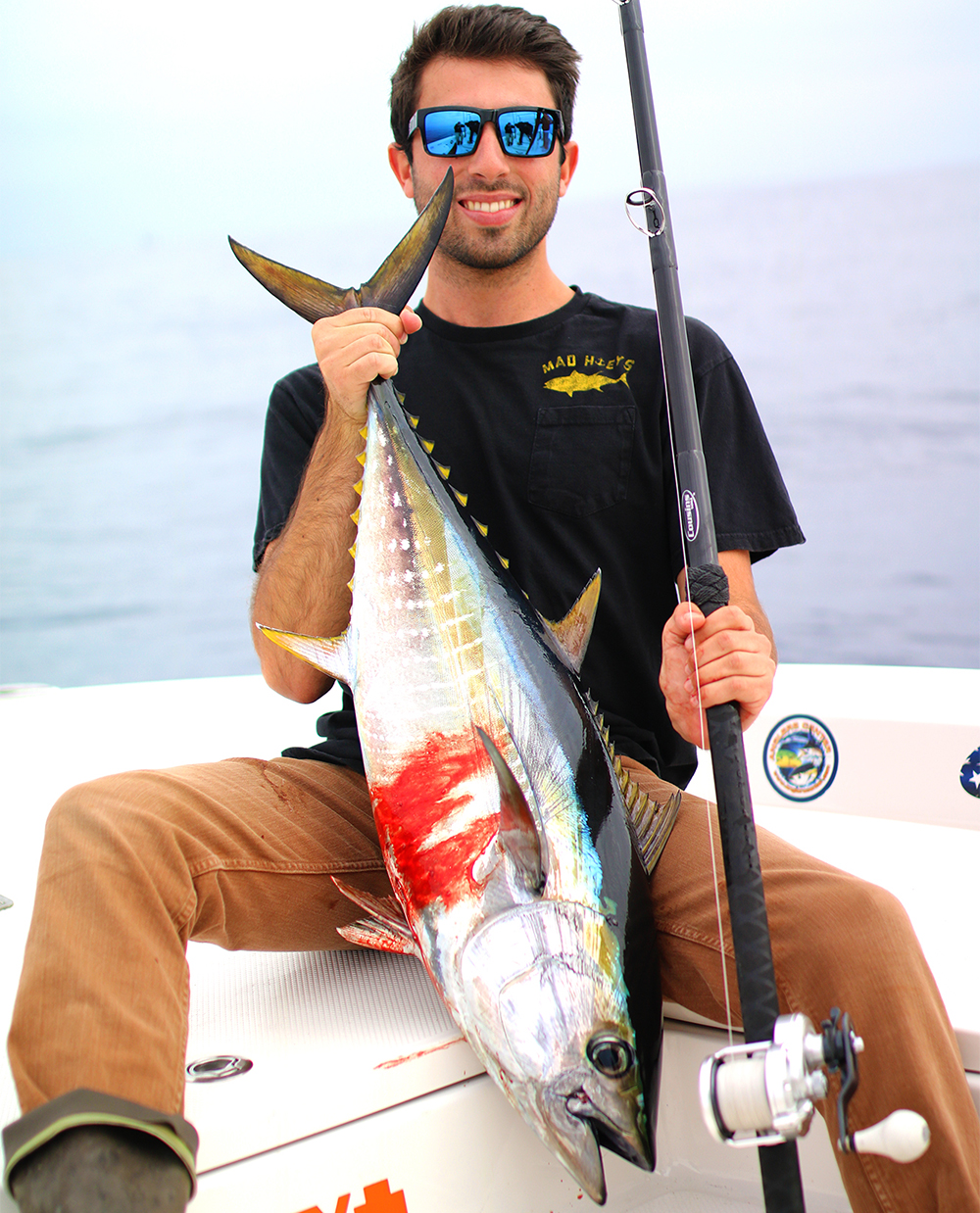
Depending on where you live, you may have the opportunity to fish for yellowfin tuna nearly year round.
I live in Southern California, where yellowfin typically show up around July and then vacate by September as the warm water begins to cool off.
Since we have a limited season for chasing these pelagic’s, we need to make the most of every opportunity when targeting yellowfin.
Each time we spend a day targeting yellowfin, I am reminded of the full speed action and drama free experience yellowfin fishing offers.
Yellowfin typically travel in large schools, so if you find a few boiling around, there is a good chance there is a massive volume of fish in close proximity.
I’m going to go into detail about how you can effectively target and fish yellowfin to a point where you have several fish hanging at once, and fill the kill bag with limits for four or more in just a few hours.
Since I am a Southern California fisherman, these tips and techniques are based off what works for us in the Pacific waters.
Fall San Diego Yellowfin Bite [VIDEO]
Water Conditions
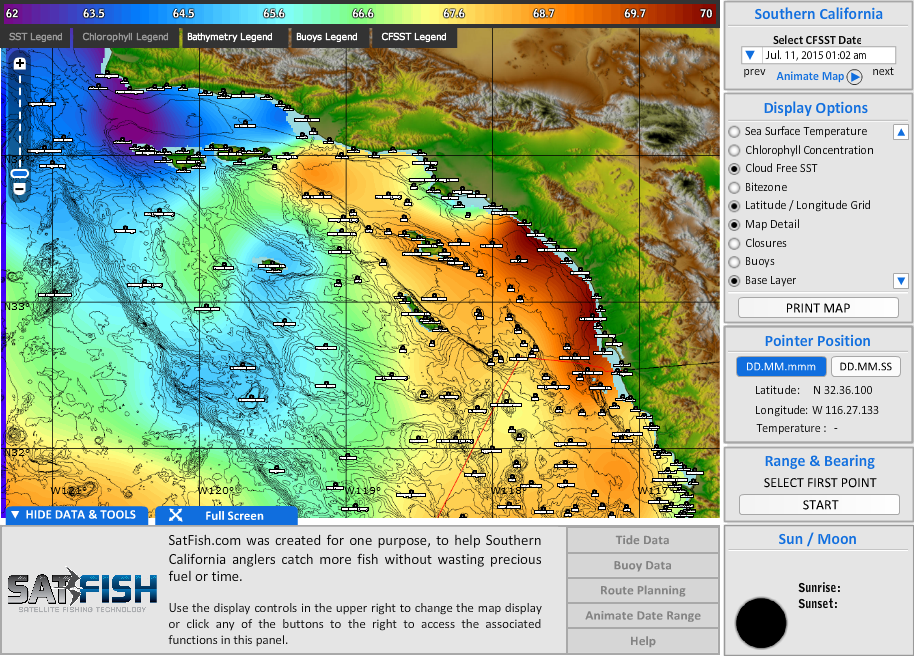
When we are specifically targeting yellowfin, we look for edges or pockets of warm water as the yellowfin typically travel in warmer water.
Along with warm water, clean water is important as well.
While bluefin will be found in off-colored water, yellowfin prefer cleaner, blue water.
The edges where dirty and clean water meet will often congregate bait, with the yellowfin lurking just on the cleaner side.
How To Find Them
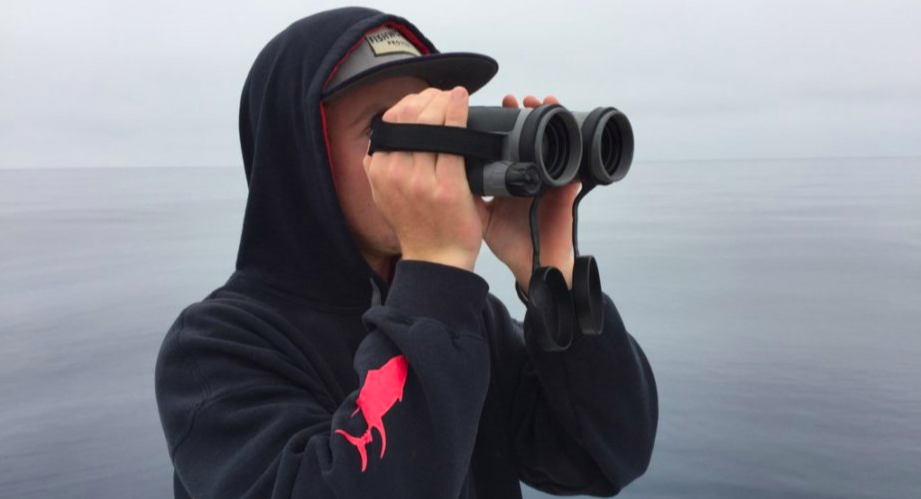
Fishing yellowfin in glassy conditions is ideal since it’s easier to see a lone fish break the surface in the distance.
Yellowfin will bite in most weather conditions, but if you are not looking for floating structure, then keeping a close eye on any surface disturbance will be key in rougher conditions.
In Southern California, we often fish floating chunks of detached kelp, which we call “kelp paddies”.
These kelp paddies offer protection for baitfish, which in turn attracts game fish like yellowtail, yellowfin, dorado, etc.
When the tuna have settled into a zone, and are not moving around as much, they become associated with kelp paddies.
When this occurs in our zone, we begin scouring the ocean trying to locate one of these floating bait hotels to start our yellowfin download.
If water conditions have not stabilized, then the yellowfin will stay on the move, hopping from zone to zone every few days.
If this is the case, there are several techniques that we employ to try and locate a school.
- Look for a fish, or several fish, breaking the surface boiling on baitfish
- Look for birds (terns) that are diving and swooping on fish just below the surface and out of sight
- Troll jigs to get a blind jig strike
- Rely on side scan sonar and up/down sonar to find a school below the surface
- Look for porpoise with tuna underneath
No matter what technique we are using, we always have a few guys in gyro-stabilized binoculars looking for signs of tuna, along with a marlin sleeper or swordfish.
Getting Them To Bite Full Speed
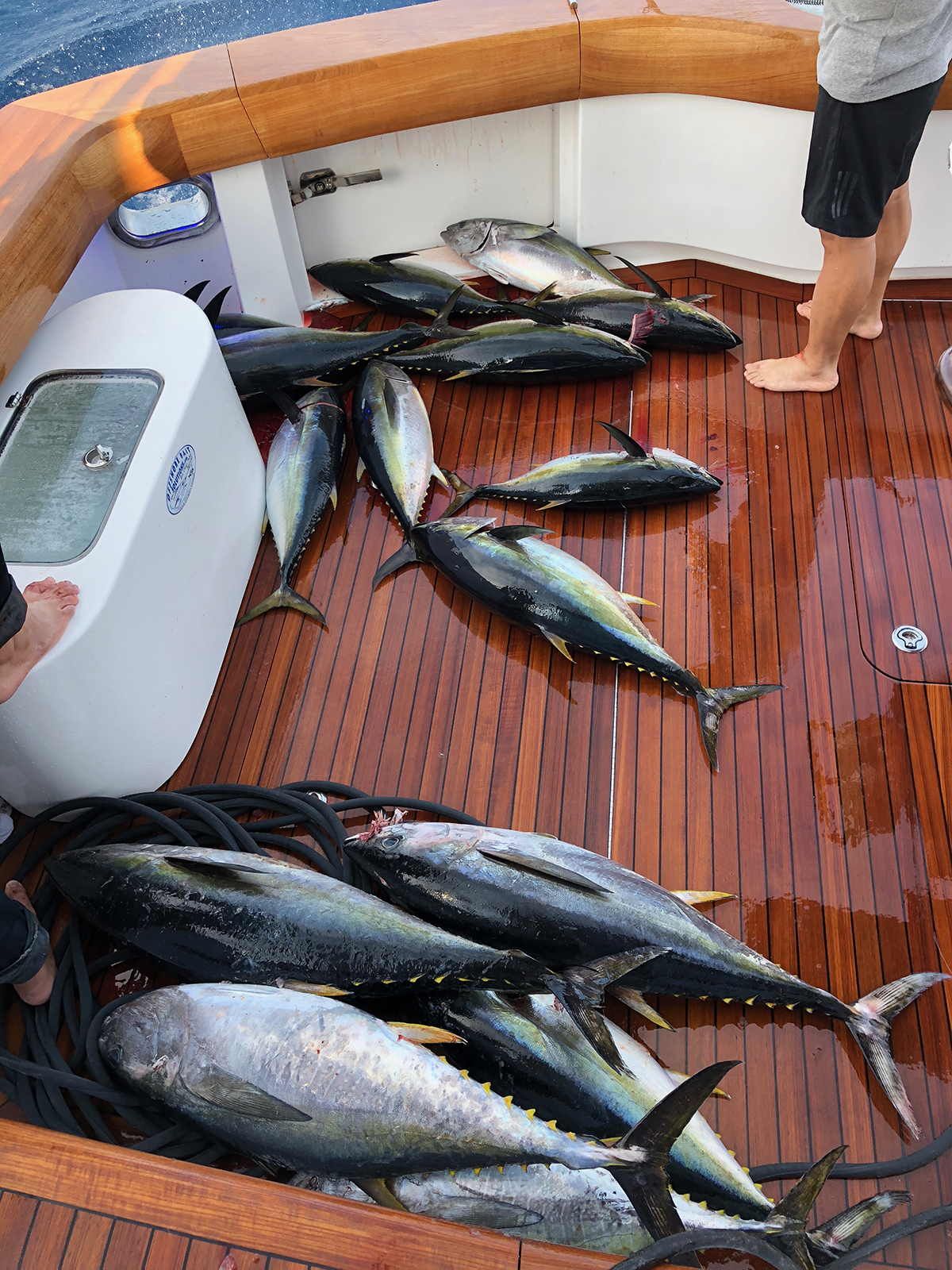
Once we have a school of fish located either visually or with the electronics, it’s time to get to work!
The guy driving the boat will slow down and “slide” the boat into position at a slow, quiet speed.
As the boat is sliding into position, another guy is scooping out several net full of live sardines or anchovies and throwing them behind the boat to start a chum a line.
While one guy is throwing live chum bait, everyone else is pinning a live sardine onto their hooks and casting their baits into the water.
The chum will grab the schools attention and get them in the biting mood…hopefully.
Often, it only takes a minute for the first person to hook a fish, and if this happens, there is a good chance the school will bite full speed.
It’s really important for someone to keep a steady flow of chum, even when everyone is fishing.
The chum at this point will keep the fish around the boat and in a frenzy.
When fishing for numbers, we will hook a fish, and once it’s taking drag we will put the rod in the rod holder and grab another setup.
We will then hook another fish and repeat the process until five or six fish are hooked at once (see video above).
This technique works well for the 20 to 30-pound class fish, which is the norm.
I’ll go into more detail below about the recommended hooks and line size, but it’s important for the angler to let the tuna eat the bait for about five seconds before setting the hook.
This will ensure that the fish has had a chance to eat the bait fully so the bait is not pulled from the fish’s mouth.
Picking a very lively bait from the bait tank is key to draw a bite.
A half-dead bait will not attract a bite as a fresh bait will!
This process has lead to us putting 40 to 50 yellowfin on the boat in two hours.
If the fish don’t have lockjaw and are fired up with a constant flow of chum, it will be wide open fishing until all the live bait is gone.
Artificial Lures
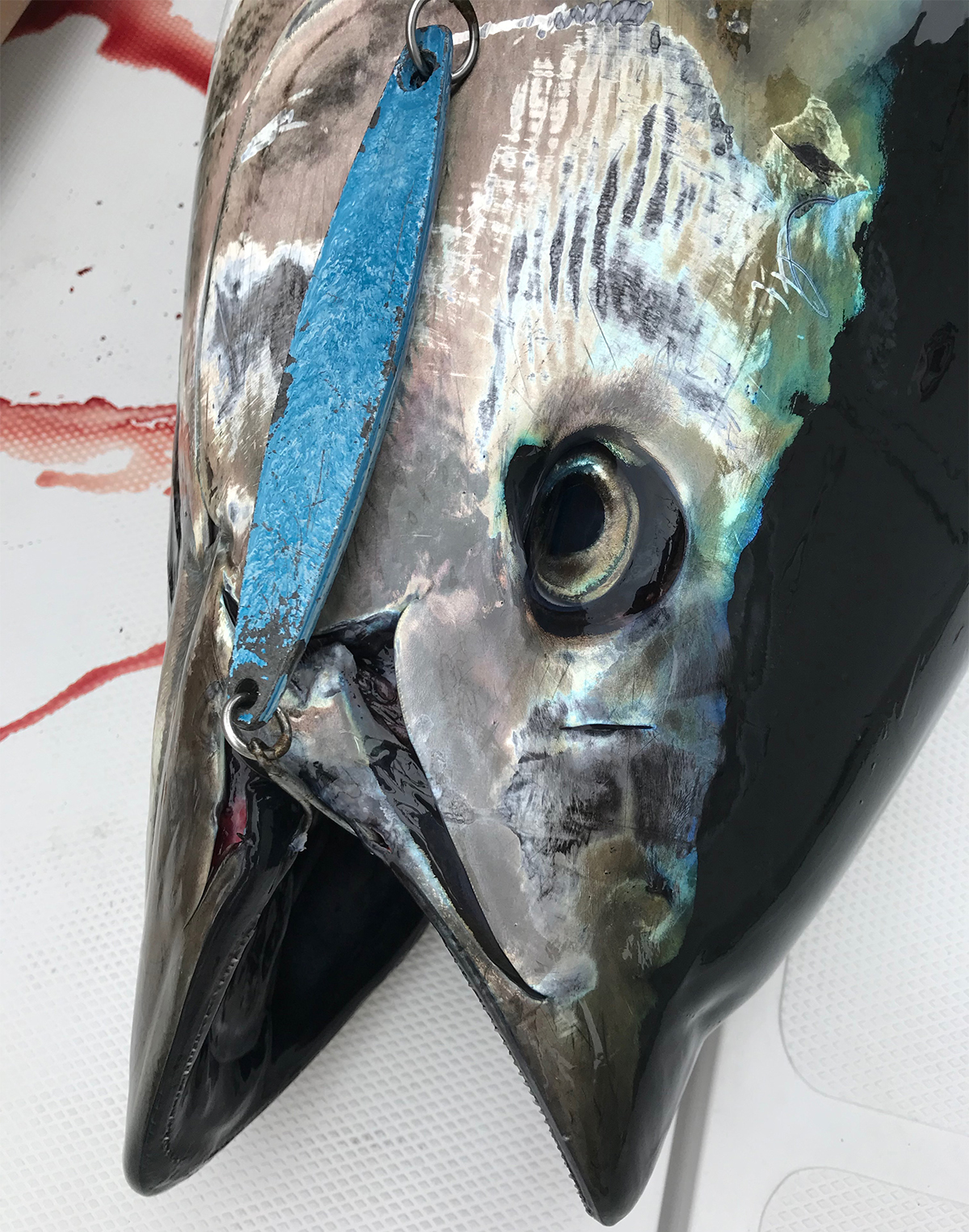
If bait is running low, or if we want to change it up, then we will fish article lures.
I have to say, the go-to lures for yellowfin are Shimano Colt Sniper lures and Halco poppers.
Casting and hooking a fish on the retrieve is one of the best feelings ever; it’s what all fisherman live for.
Yellowfin will give a dedicated lure fisherman the time of their life, biting on back to back casts more times than not.
Tuna Tackle
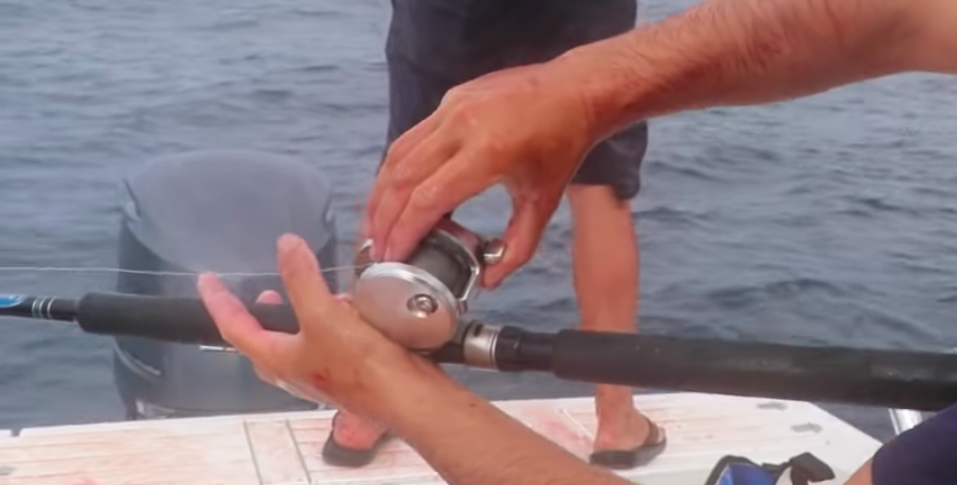
As mentioned above, most of the yellowfin in our waters range from 20 to 30 pounds, which is the perfect class to fish on lighter line.
For this grade of fish, we will fish a 20 to 25-pound fluorocarbon leader that is tied to a 1/0 Mustad or Owner hook.
Hook style, whether circle or j, comes down to personal preference, but I like fishing a circle hook as it’s harder for a fish to chew through the line when hooked in the corner of the mouth.
When fishing either style hook, point the rod at the fish and turn the reel handle until tight; don’t swing to set the hook.
Using this method, a j hook will often find the corner of the mouth much like a circle hook would.
When fishing for the larger 40 to 70-pound fish, 30 or 40-pound fluorocarbon leader is the go to.
This increased line class gives the pulling power needed to land a bigger fish.
We like to fish smaller style reels, like Shimano Trinidad 14’s or 16’s, or Shimano Talica 8’s or 10’s.
We either fill the reels with braided fishing line, either 50 or 65-pound, or fill the reel 2/3 of the way with braided line, and fill the rest with 25 or 30-pound monofilament.
The “top shot” of mono provides some stretch, as braid does not stretch.
Again, this comes down to personal preference.
A softer rod can provide give if you’re fishing all braid.
Time To Plug The Boat
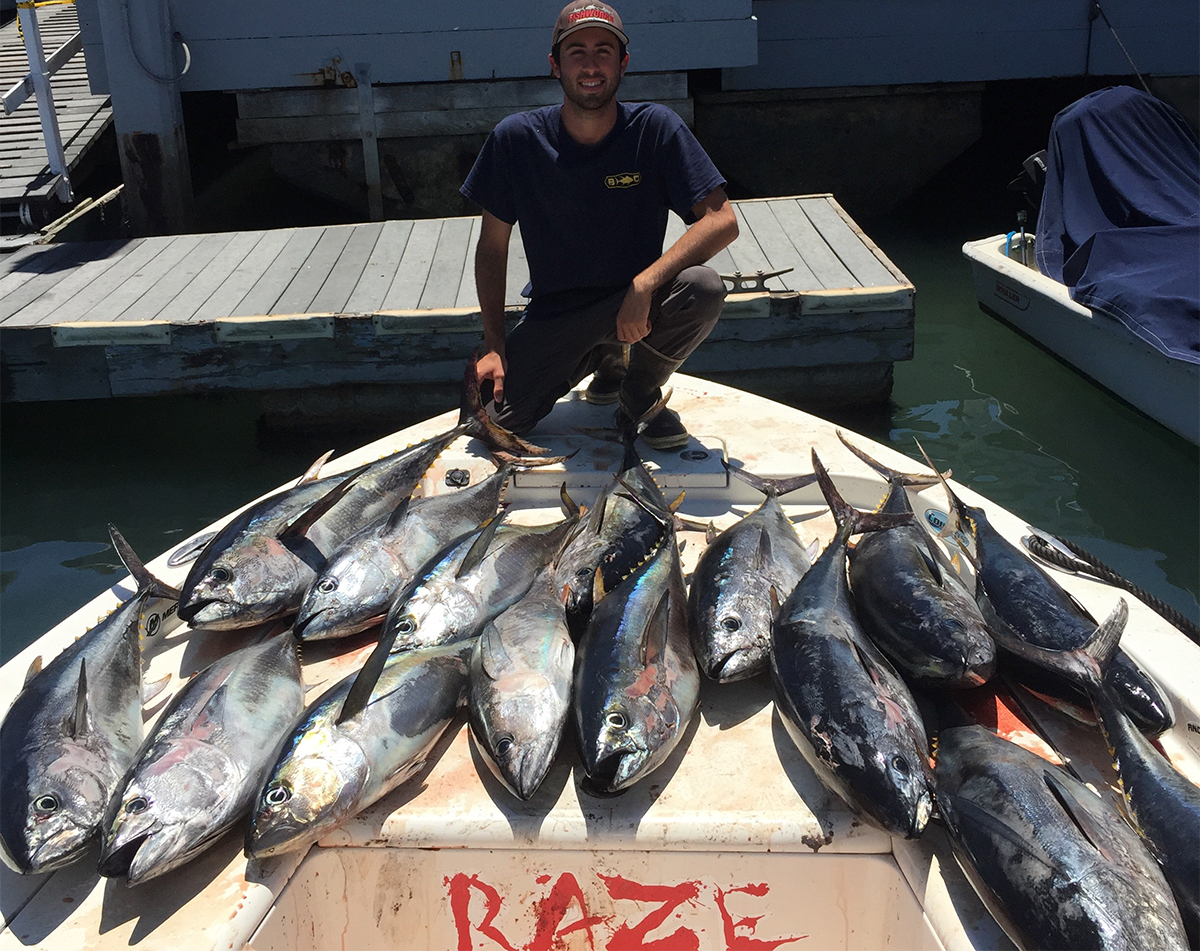
Next time you’re on the water targeting yellowfin, keep these tips in mind, and I’ll almost guarantee your fish count will increase.
Once your fish holds or kill bag is full, you can keep fishing, just release them boat side.
When you hear reports of yellowfin biting full speed, take out your neighbor or relatives that don’t fish much, but that want fun action.
Yellowfin put up the perfect amount of fight, photograph well and taste delicious.
I look forward to this summer when we can put 40 fish on deck at a rapid pace!
How many have you landed in one afternoon?
Morning Tuna [VIDEO]
Conclusion
If you want more of Zach, you can find him at YellowfinBoatsForSale.com or HatterasYachtSale.com.
Have any questions about Southern California tuna?
Let us know in the comments!
P.S. if you know someone who would like this article, TAG or SHARE this with them!
 FREE GUIDE
FREE GUIDE
“The Inshore Fishing Manifesto”
The 3 Must-Know Breakthroughs To Consistently Catching Inshore Slams Faster Than You Ever Imagined.
Grab Your Free Copy Here
Related articles:
Related categories:
STOP WASTING TIME ON THE WATER!
Do what the “SMART ANGLERS” are doing and join the Insider Club.
Here’s what you’ll receive today when you join:
- Weekly fishing reports and TRENDS revealing exactly where you should fish every trip
- Weekly “spot dissection” videos that walk you through all the best spots in your area
- Exclusive fishing tips from the PROS you can’t find anywhere else
- Everything you need to start catching fish more consistently (regardless if you fish out of a boat, kayak, or land).



